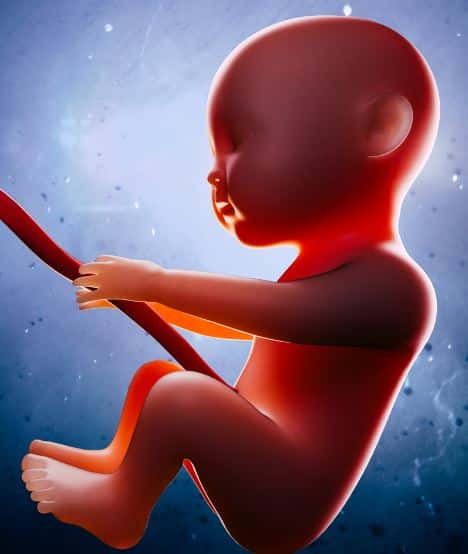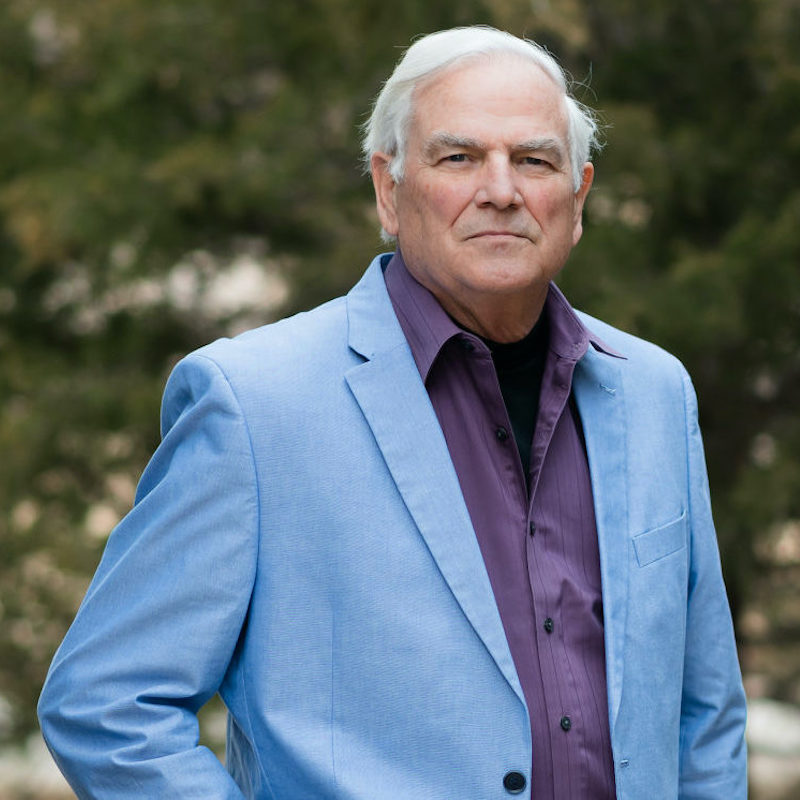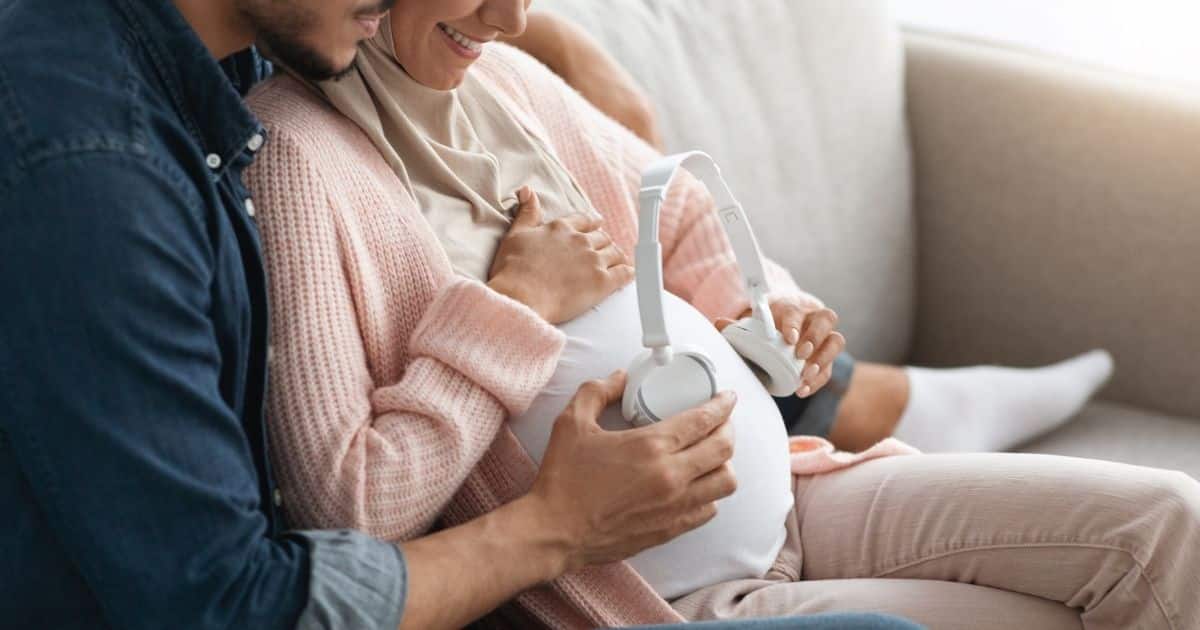 In the late 1970s, I worked as a research assistant on a project exploring the use of recorded intrauterine noise to provide comfort to infants. The idea was that babies had been exposed to the sounds inside their mother’s womb for several months, and these familiar noises could soothe them. This research was a prominent topic in audiology research worldwide at that time.
In the late 1970s, I worked as a research assistant on a project exploring the use of recorded intrauterine noise to provide comfort to infants. The idea was that babies had been exposed to the sounds inside their mother’s womb for several months, and these familiar noises could soothe them. This research was a prominent topic in audiology research worldwide at that time.
Jumping ahead to today, we’ve learned more about the actual sound environment in the womb. Estimates suggest it ranged from 30 to 96 decibels (dB). Some researchers argued that the primary sounds a fetus hears inside the womb are related to blood flow, the movement of stomach and intestines, possibly reaching around 90 dB (similar to background noise in an apartment next to an elevated train). While a developing fetus can tolerate these internal noises, exposure to loud external sounds could harm their hearing.
According to Deliege and Sloboda’s 1996 report, the fetal acoustic environment consists of continuous cardiovascular, respiratory, and intestinal sounds, occasionally interrupted by shorter bursts during maternal movements and vocalizations. Vibrations on the mother’s abdomen can generate sounds in the womb, primarily below 300 Hz. Their study showed that the patterns of sound transmission differ between vibroacoustic stimulation and airborne sound pressure exposure. These sounds can affect various aspects, including changes in behavioral state, brain blood flow, auditory brainstem response, and cerebral glucose utilization along the central auditory pathway, especially in animals.
Research using hydrophones revealed that the womb is relatively quiet, akin to the ambient noise levels in our environment, typically between 50 and 60 dB. Within this soundscape, the mother’s voice stands out and captures the prenate’s special attention because it’s notably distinct from the amniotic environment. These sounds play a crucial role in the early communication and bonding between the baby and mother. Some studies have found that exposing newborns to intrauterine sounds can make them calmer and more self-regulated.
The soothing sounds of the ocean and water likely evoke memories of the fluid environment during the early stages of life. Researchers like Tomatis suggest that the maternal heartbeat, respiration, and intestinal sounds contribute to our collective attraction to the sound of the surf and may be connected to our innate sense of rhythm. They argue that prenatal sounds are a vital developmental component because they lay the foundation for later learning and behavior. The brain’s response to sound stimulation during fetal development occurs at a higher level of organization.
The ear starts developing in the third week of gestation, becoming functional by the 16th week, and active listening begins around the 24th week. Ultrasound observations have shown that fetuses can hear and respond to sound pulses starting around the 16-week mark, even before their ears are fully developed. The cochlear structures of the ear appear to function by the 20th week, with mature synapses forming between the 24th and 28th weeks. As a result, most formal prenatal stimulation programs are designed to begin during the third trimester. Hearing is likely the most advanced sense before birth, with four-month-old fetuses showing specific responses to sound, such as an accelerated heart rate when exposed to loud music.
A Canadian Study on Sleep Machines
Recent research on infant sleep machines has revealed that some of these devices, designed to play soothing sounds to help babies sleep, can exceed recommended noise limits for infants in hospital nurseries when operated at their maximum volume. The study involved testing 14 different infant sleep machines, commonly available in the U.S. and Canada. These machines played 65 different sounds at their highest volume, and the tests were conducted at three varying distances: 30 centimeters (similar to the distance between the infant and the crib rail), 100 centimeters (close placement near the crib), and 200 centimeters (across the room, approximately 6.5 feet away).

The results showed that all of the machines surpassed the recommended 50-dB (dBA) noise limit observed in hospitals when measured at both the 30 and 100-centimeter distances. Three of the devices even reached noise levels exceeding 85 dBA when placed just 30 centimeters away from the infant, and if played continuously for eight hours, these levels would exceed the noise limits set by the National Institute for Occupational Safety and Health for adult workers.
Dr. Gordon B. Hughes, the program director of clinical trials for the National Institute on Deafness and Other Communication Disorders, who was not involved in the study, expressed concern that unless parents are adequately informed of this potential danger or manufacturers modify the design of these machines for safety, there remains a risk that parents might not be aware of the issue. He emphasized the importance of raising awareness.
Senior study author Dr. Blake Papsin, an otolaryngologist-in-chief at the Hospital for Sick Children in Toronto, also voiced concerns about the potential harm of white noise to a developing infant brain, as infants require exposure to a variety of sounds for healthy brain development. He emphasized that completely blocking out all informative sounds at a loud, potentially harmful level is problematic. The study authors recommended that parents reduce the volume and place the machines at a distance greater than 200 centimeters from the infant to protect against hearing loss.
About the author

Robert M. Traynor, Ed.D., is a hearing industry consultant, trainer, professor, conference speaker, practice manager and author. He has decades of experience teaching courses and training clinicians within the field of audiology with specific emphasis in hearing and tinnitus rehabilitation. He serves as Adjunct Faculty in Audiology at the University of Florida, University of Northern Colorado, University of Colorado and The University of Arkansas for Medical Sciences.
**this piece has been updated for clarity. It originally published on March 25, 2014







